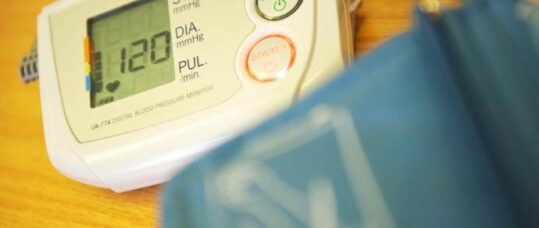NICE to reduce CVD risk threshold for treating hypertension

NICE is to reduce thresholds for considering high blood pressure treatment, including for patients with a risk of CVD, according to new draft guidelines.
But it will not lower thresholds for diagnosing hypertension – a move that was being considered and that could have seen a large proportion of the population assessed as having the condition.
The latest draft guidelines from NICE, which will replace the 2011 version, include a number of updates as to when patients should start treatment, including reducing the threshold for considering high blood pressure treatment for patients with a risk of CVD.
Related Article: Be alert to pancreatitis in patients using GLP-1 weight-loss drugs
The draft said blood pressure lowering drugs should be offered to stage one hypertension patients under 80 who have an estimated 10-year risk of CVD of 10% or more, a reduction on the previous ‘20% or greater’ threshold.
Around 450,000 men and 270,000 women would fall into this category and could therefore require medication, NICE said.
However, due to ‘variability in how the 2011 recommendation with a threshold of 20% is being implemented in practice’, it’s estimated around 50% of people in this group are already being treated with blood pressure lowering drugs, NICE added.
Meanwhile, the new draft guidance said that despite recent studies showing the apparent benefit of reducing thresholds for diagnosing hypertension, the evidence was lacking and ‘difficult to interpret’.
NICE previously said it was considering the same evidence that led to drastically lowered hypertension thresholds in the US, and an additional 14% of the population classed as having high blood pressure.
Related Article: Women less likely than men to be treated for heart condition
The US guidance was updated last year, and included a sharp reduction in the threshold for stage one hypertension from an average systolic blood pressure of 140 to 130mmHg, and from ≥160 to ≥140mmHg for stage two.
The change was prompted by the 2015 SPRINT study, which showed that treating patients with a target blood pressure of 120mmHg, rather than the 140mmHg target, reduced mortality and cardiovascular events.
But today’s draft NICE guidelines said: ‘The evidence did not show that changing the current blood pressure thresholds for clinic measurement or home blood pressure measurement (HBPM) would improve diagnostic accuracy compared with ambulatory measurement pressure measurement (ABPM), so the committee agreed the 2011 thresholds for diagnosis should be retained.
Related Article: Increased risk of heart disease with adult-onset type 1 diabetes
‘The committee noted that these are in line with most international guidance.’
NICE explained that while the committee considered the same studies as the US – which said people with blood pressure below 140/90mmHg might also benefit from medication – they were ‘difficult to interpret because although they recruited people with raised blood pressure who had increased CVD risk, they also included people who had other CVD risk factors such as established blood pressure-related organ damage from previous CVD, or chronic kidney disease’.

See how our symptom tool can help you make better sense of patient presentations
Click here to search a symptom


NICE is to reduce thresholds for considering high blood pressure treatment, including for patients with a risk of CVD, according to new draft guidelines.



